Geujip Sikdang (그집식당)
15.1Km 2021-04-13
2, Yeokjeon 1-gil, Andong-si, Gyeongsangbuk-do
+82-54-841-3331
It is a place where you can enjoy various Korean side dishes. This restaurant's signature menu is kimchi stew. This Korean dishes restaurant is located in Andong-si, Gyeongsangbuk-do.
Songgyehyeon [Korea Quality] / 송계헌 [한국관광 품질인증/Korea Quality]
15.8Km 2021-03-25
332, Byeongsan-gil, Andong-si, Gyeongsangbuk-do
This hanok (traditional Korean House) lies only 500 m away from Andong’s Byeongsanseowon Confucian Academy. Byeongsanseowon Confucian Academy is one of the Confucian academies (Joseon-era places of learning and veneration of Confucian scholars) registered as a UNESCO World Heritage, and is particularly known for its beautiful harmony with the surrounding nature. Songgyehyeon likewise faces the Nakdonggang River to the front, and a 330 m-high mountain to the back, displaying the characteristic harmony of hanok with nature.
The house was named Songgyehyeon by the owner, who wanted to build a house made out of pine trees (“song”). The entire house is offered for rent, which makes it ideal for families and groups. Songgyeheon follows a strictly traditional structure of hanok, as evident in its hipped-and-gable roof, but its interior is equipped with comfortable modern facilities. The house includes both bedrooms and Korean-style ondol (under-the-heating system) rooms. One of the three bedrooms available has a queen-sized bed, while the remaining two are equipped with comfortable mats. The common space, spacious enough to host a group, has a high ceiling dominated by exposed beams. The kitchen is equipped with cooking equipment like refrigerator, gas stove, microwave oven, and utensils for guests to cook their own food. The owner of the house also enthusiastically provides detailed information on Andong’s many tourist sites.
Jeongjae Head House [Korea Quality] / 정재종택 [한국관광 품질인증]
16.1Km 2023-04-13
경상북도 안동시 임동면 경동로 2661-8
+82-10-8590-0625
Boasting more than 300 years of tradition, Jeongjae Traditional House is the head house of Ryu Chi-myeong (pen-name: Jeongjae), who inherited the study of Togye Yi Hwang (1501-1570), one of the two most prominent Korean Confucian scholars of Joseon. The old house features the characteristic construction elements of a Joseon hanok, including the stylobate, wooden pillars, toenmaru (the narrow wooden porch running along the outside of the building), tiled roof, and other structures, and commands an open view of Imha Lake. The house was originally built by Ryu Gwan-hyeon, the great-great-grandfather of Ryu Chi-myeong, in 1735 (the 11th year of the reign of King Yeongjo of Joseon) in the village of Handeul in Imdong-myeon, Andong-si, Gyeongsangbuk-do, but it was relocated to the foot of Guamsan Mountain in 1987 when Imha Dam was built and the surrounding area was submerged as a result. The house consists of the daemunchae (gate building), jeongchim (a ‘ㅁ’-shaped house with a tiled roof), haengnangchae (servants’ quarters), a shrine, and a pavilion. The sarangchae (men’s quarters) is clearly visible, while the anchae (women’s quarters) is concealed within the house. The sarangchae has a sarangmaru (wooden floor), a large sarangbang room, a small sarangbang room, and there is a small maru between the two rooms. The buildings of the sarangchae and anchae are clearly divided into segregated spaces for men and women according to Confucian tradition. The anchae has a daecheongmaru (large wooden floor) in the middle; a main room, kitchen, and toilet on the right; and a numaru (upper floor) and sangbang (upper room) on the left. The small side door of the main gate links to the door by which to enter the anchae, which has a small vegetable garden. Manujeong Pavilion (Gyeongsangbuk-do Cultural Heritage Material No. 37) is a half-hipped roof building with single-layered eaves located on the left side of the house outside the main gate. It is the place where Ryu Chi-myeong used to teach his students, and consists of a large maru and a guest room. The pavilion is also surrounded by the beautiful scenery of Imha Lake, mountains, and chestnut trees. Jeongjae Traditional House provides two special experience programs: Making Songhwaju, which is the Ryu family’s home-brewed liquor (15 to 18 degrees) made with rice, glutinous rice, yeast, pine needles, and chrysanthemums, led by the owner’s wife (Intangible Cultural Asset No. 20); and Making Tarak, which is a fermented milk drink that has been made by the Ryu’s family for some 500 years. As the recipe for making Tarak is relatively simple, and uses yeast that is usually used to make raw rice wine like Makgeolli, people can easily make it at home. The house also runs a traditional music program designed to show participants how to play the gayageum (Korean zither with twelve strings) and sing Korean folk songs, and stages small concerts.
Academia Neoconfuciana Byeongsan Seowon (병산서원) [Patrimonio Cultural de la Humanidad de la Unesco]
16.2Km 2024-05-07
Byeongsan-gil 386, Pungcheon-myeon, Andong-si, Gyeongsangbuk-do
Byeongsan Seowon es una academia neoconfuciana que fue fundada para honrar la memoria de Seong-nyong Yu (1542-1607), un personaje respetado por su carácter y por sus escrituras. En 1863, este tipo de escuelas tenían muchas libertades bajo las leyes Joseon, incluso no debían pagar impuestos y otros gastos. El río Nakdonggang está situado justo enfrente de la academia. Si se cruza, se llega hasta el monte Byeongsan.
Gilpung (길풍)
16.2Km 2021-03-23
8, Nabau-gil, Andong-si, Gyeongsangbuk-do
+82-54-841-9967
It is a clean and delicious restaurant, selected by the Korea Tourism Organization, where you can taste Andong's local food. This restaurant's signature menu is Andong braised chicken. This Korean dishes restaurant is located in Andong-si, Gyeongsangbuk-do.
Imhaho Gisa Sikdang(임하호기사님식당)
16.6Km 2021-04-09
8, Seonchakjang-gil, Andong-si, Gyeongsangbuk-do
+82-54-822-4929
There are a variety of side dishes, so you can enjoy different foods. This Korean dishes restaurant is located in Andong-si, Gyeongsangbuk-do. The representative menu is kimchi stew.
Suaedang [Korea Quality] / 안동 수애당 [한국관광 품질인증]
16.8Km 2023-04-13
1714-11, Sugogyonggye-ro Imdong-myeon, Andong-si, Gyeongsangbuk-do
+82-54-822-6661
'Suaedang Traditional House was built by Ryu Jin-geol, also known by his pen-name of Suae, in 1939. This hanok-style house consists of three buildings that measure 29-kan (a traditional measurement that corresponds to the space between two columns) in total.
The main room, or jeongchim (7-kan at front and 2-kan at sides), has a half-hipped roof, and forms a‘ㄱ’-shape with the storeroom (10-kan at front), which also has a half-hipped roof. Originally located at 612 Sugok-dong, Andong-si, the house was relocated from a slight slope to a flat piece of land due to the construction of Imha Dam in 1987. Consequently, the Jeongchim was rebuilt at a lower level than before.
The Suaedang was renovated by modernizing the old-style facilities including the kitchen, toilets, and washroom without changing their external features, while the rooms and daecheongmaru (main floored room) were decorated with red clay and natural paint. Suaedang, with its beautiful panoramic view of the lake, was designated as Gyeongsangbuk-do Cultural Property No. 56.
Memilkkot Pimyeon (메밀꽃피면)
17.8Km 2021-03-26
22, Seonseong 4-gil, Andong-si, Gyeongsangbuk-do
+82-54-843-1253
It is a place where the directly made soba noodles and thick broth are excellent. The best menu at this restaurant is buckwheat noodles. This Korean dishes restaurant is located in Andong-si, Gyeongsangbuk-do.
Cheonji Sikdang (천지식당)
17.9Km 2021-03-24
90, Utjangteo-gil, Andong-si, Gyeongsangbuk-do
+82-54-822-7008
You can eat maeuntang (fish stew) made with fresh freshwater fish. This Korean dishes restaurant is located in Andong-si, Gyeongsangbuk-do. The representative menu is spicy freshwater fish stew.
Aldea Yekki (예끼마을)
18.0Km 2024-05-17
Seonseong-gil 14, Dosan-myeon, Andong-si, Gyeongsangbuk-do
La Aldea Yekki está llena de callejones con coloridos murales, galerías con obras de arte de artistas locales y un centro de experiencia de casa tradicional hanok. Una actividad particularmente popular es un paseo por el Sendero Seonseongsusang-gil, que cruza el lago y ofrece hermosos paisajes.
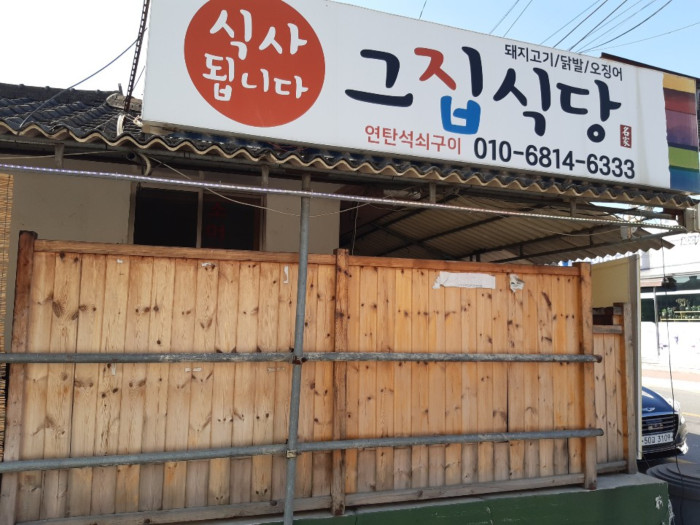
![Songgyehyeon [Korea Quality] / 송계헌 [한국관광 품질인증/Korea Quality]](http://tong.visitkorea.or.kr/cms/resource/42/2706142_image2_1.jpg)
![Jeongjae Head House [Korea Quality] / 정재종택 [한국관광 품질인증]](http://tong.visitkorea.or.kr/cms/resource/96/2579496_image2_1.jpg)

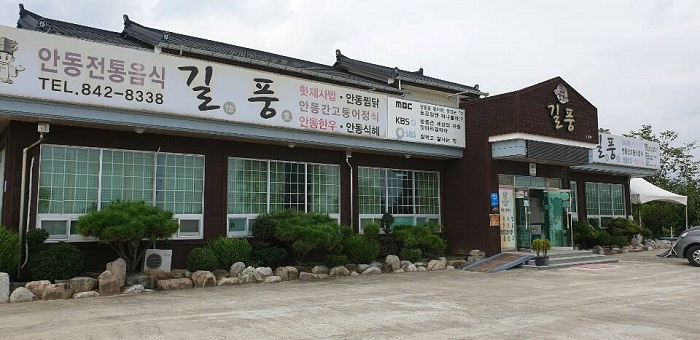
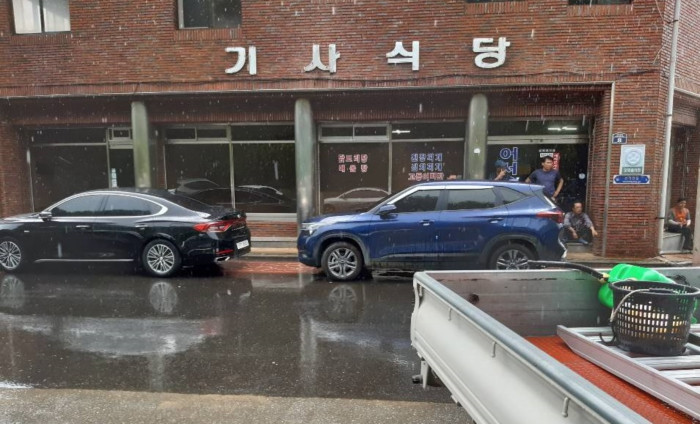
![Suaedang [Korea Quality] / 안동 수애당 [한국관광 품질인증]](http://tong.visitkorea.or.kr/cms/resource/88/2528888_image2_1.jpg)
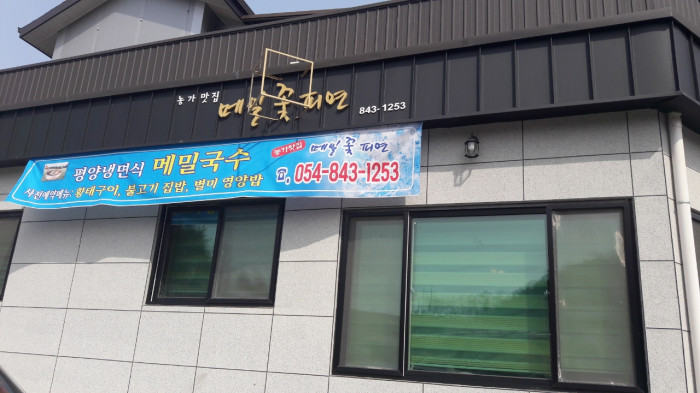
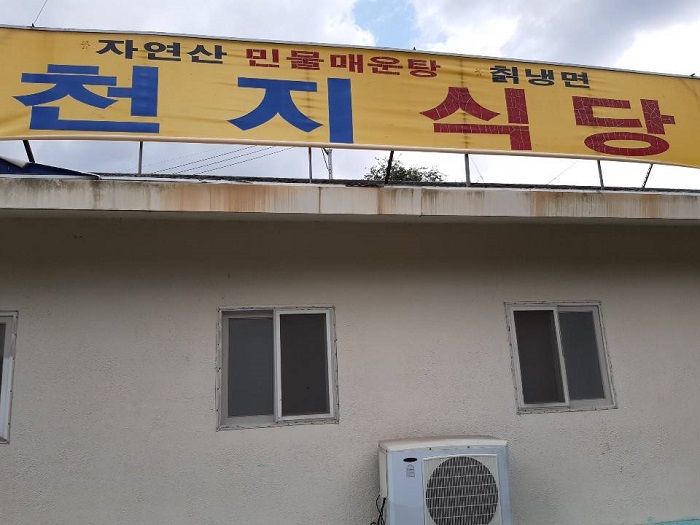
 Español
Español
 한국어
한국어 English
English 日本語
日本語 中文(简体)
中文(简体) Deutsch
Deutsch Français
Français Русский
Русский